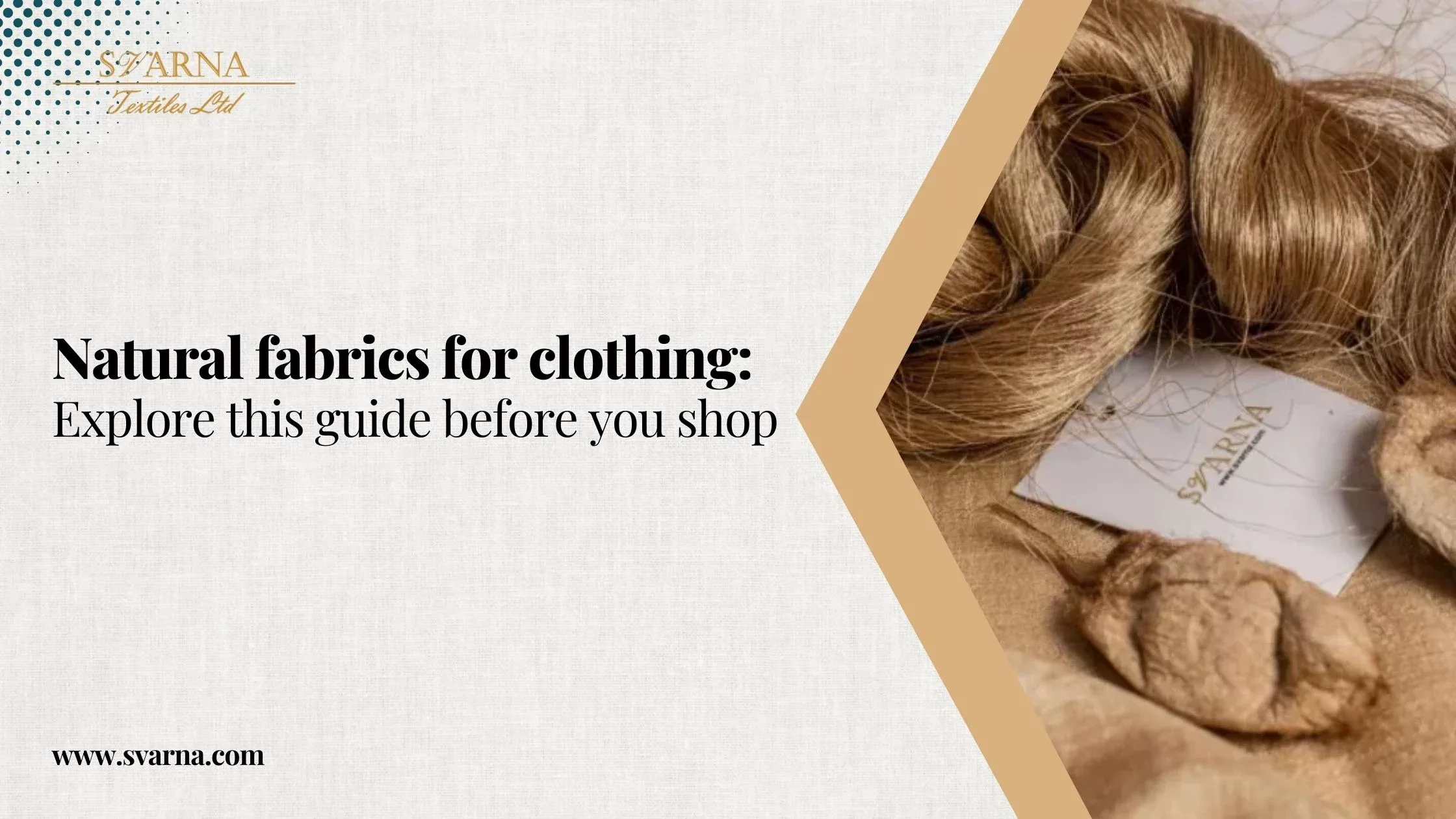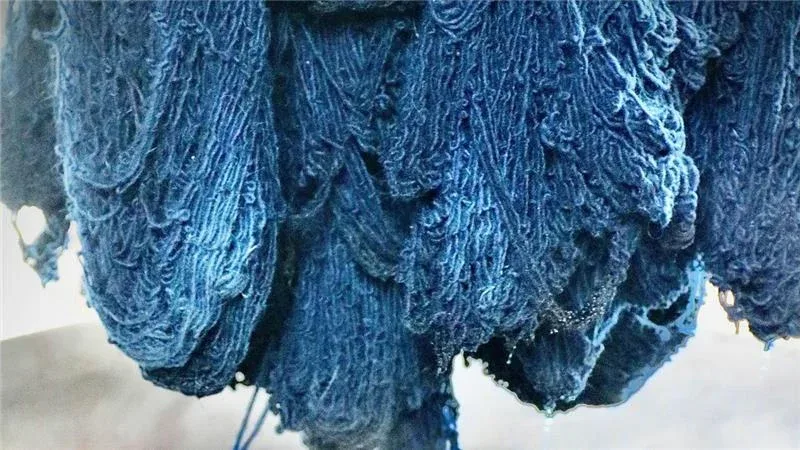In a world where sustainability is becoming increasingly important, the fashion industry is undergoing a significant shift towards more eco-friendly practices. One area that has gained particular attention is the materials used in clothing production. Natural fabrics, derived from renewable sources such as plants and animals, are emerging as a popular choice among environmentally-conscious consumers. Among them, cotton stands as a cornerstone, but its variants like linen cotton and khadi cotton fabric offer unique qualities that discerning shoppers should consider.
In this guide from the best linen fabric manufacturer in India, learn about some amazing varieties of natural fabrics for clothing that will help you to make an informed purchasing decision. Let’s find out.
Unveiling the Timeless Appeal and Unique Qualities of Natural Fabrics:
Cotton:
Cotton, often referred to as the “fabric of our lives,” holds a special place in the world of textiles. Its breathable nature makes it ideal for clothing, especially in warm climates or during the summer months. Unlike synthetic fabrics, it allows air to circulate freely, keeping the body cool and comfortable all day long. Additionally, cotton is hypoallergenic, making it gentle on sensitive skin and reducing the risk of irritation or allergic reactions.
Khadi cotton:
Khadi cotton fabric holds a special place in the heart of India, symbolizing self-reliance, sustainability, and social empowerment. Hand-spun and handwoven from cotton or silk yarns, khadi cotton fabric embodies the ethos of simplicity, craftsmanship, and ethical production. Beyond its cultural significance, khadi cotton fabric offers a host of practical benefits. Khadi cotton is inherently breathable and lightweight, making it suitable for a wide range of garments, from airy kurtas and sarees to scarves and stoles. Its unique texture adds character and depth to clothing, while its natural irregularities reflect the artisanal process behind its creation. As the top cotton fabric exporter in the country, we believe that by choosing khadi cotton, consumers support local artisans and sustainable practices, contributing to the preservation of traditional craftsmanship and rural livelihoods.
Linen:
Made from the fibers of the flax plant, linen is known for its lightweight and breathable qualities, making it perfect for warm-weather clothing. Linen also has a unique texture that adds a touch of sophistication to any outfit. Furthermore, flax plants require minimal water and pesticides to grow, making linen a more sustainable choice compared to other fabrics. We manufacture handwoven linen which has a softer hand feel and has a unique texture compared to machine woven linen fabric.
Linen cotton fabrics possess excellent moisture-wicking properties, making them ideal for hot and humid climates. They drape beautifully, exuding a relaxed elegance that is both classic and contemporary. By blending linen with khadi cotton, we have created fabrics that get more comfortable with each wash, ensuring long-lasting enjoyment and value.
Wool:
Wool is a natural fiber obtained from the fleece of sheep and other animals such as goats (cashmere and mohair) and rabbits (angora). It is highly durable, insulating, and moisture-wicking, making it ideal for winter clothing items like sweaters and coats. Wool is also biodegradable and renewable, as sheep can be shorn annually without harm. Pashmina, derived from the fine undercoat of the Himalayan goat, is renowned for its unparalleled softness, warmth, and luxury.
Silk:
Known for its luxurious feel and lustrous appearance, silk is produced by silkworms during the cocoon stage of their lifecycle. Silk fabric produced by the top silk manufacturers in India, is smooth, lightweight, and has excellent draping properties, making it a popular choice for evening wear and lingerie. While silk production involves the harvesting of silkworms, advancements in cruelty-free silk production methods, such as peace silk, are gaining traction in the industry.
Silk fabric comes in various types, each with its distinct characteristics and uses. Some of the notable varieties are Mulberry silk, Tussar silk, Eri silk, Chiffon silk, Organza silk, Charmeuse silk, Pashmina, and Muga silk.
Muga silk, native to Assam, India, is produced by the Antheraea assamensis silkworms. Muga silk is revered for its durability, resilience, and unique sheen. Traditionally worn as bridal attire and ceremonial garments, Muga silk is prized for its luxurious appeal and cultural significance. Pashmina, derived from the fine undercoat of the Himalayan goat, is renowned for its unparalleled softness, warmth, and luxury.
Hemp:
Hemp fabric is derived from the fibers of the hemp plant, which is known for its fast growth and minimal need for pesticides or herbicides. Hemp fabric is durable, breathable, and has antimicrobial properties, making it an excellent choice for activewear and casual clothing. Additionally, hemp cultivation can help improve soil health and reduce carbon emissions, making it a sustainable alternative to traditional crops.
Bamboo:
Bamboo fabric is made from the pulp of bamboo grass, which is known for its fast growth and regenerative properties. Bamboo fabric is soft, breathable, and moisture-wicking, making it an ideal choice for activewear and undergarments. However, the process of turning bamboo into fabric often involves chemical treatments, so it’s essential to look for eco-friendly production methods when purchasing bamboo clothing.
Conclusion: Choosing natural fabrics for clothing is not only beneficial for the environment but also for your comfort and style. By opting for fabrics like cotton, khadi cotton fabric, linen, wool, silk, hemp, bamboo, you can reduce your carbon footprint and support more sustainable practices. So next time you’re shopping for clothing, consider the beauty and benefits of natural fabrics—it’s a choice you can feel good about.



